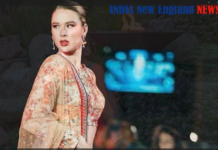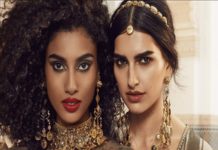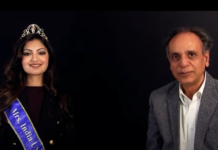By Bappaditya Chatterjee
Mechukha, Arunachal Pradesh–Weavers and designers from India’s northeast are now focusing on creating a greater variety of patterns by incorporating features from the distinctly diverse attire of the large number of tribes in the region to make a dent in the domestic and international fashion markets.
Simultaneously, they are seeking to strike a balance between the modern and traditional concept of designs, as they experiment with the aesthetics of regional fabrics and the glamour of Western wear.

The fashion scene in the northeast has been picking up and designers say they are still discovering the diversities of patterns in the attire worn by the various tribes inhabiting different states, cities and villages.
“On a particular occasion, the colours of the attire worn by a particular tribe may not be acceptable to another tribe. For instance, for people of one tribe it may be appropriate to don black dresses, which may seem offensive to some other tribe, for whom the appropriate hue is red. So neither of the tribes would wear their traditional dresses on that particular occasion,” Lathabiki Chawngthu, a designer from Mizoram, told IANS.
“So what we are trying to do is to bring about a fusion of these two colours in the dresses, so that both tribes are comfortable. And as such they can attend the parties in their traditional attires with the fusion colours,” Chawngthu added.
Gloria Ovung, a promising designer from Nagaland, prefers tweaking the traditional styles with a Western touch.
“What we are also concentrating on is to make fusion of our traditional styles and some Western concepts. This is needed to make inroads into the domestic and international fashion circuits,” Ovang told IANS.
Many budding designers from the northeast have picked up their concepts from the region’s heritage, art and culture early in their life by watching their mothers and other women knit their traditional attire.
Take Chawngthu’s case. In her childhood, she watched in awe as her mother churned out traditional dresses from local fabric.
“This helped me discover the beauty of Mizo art and culture and instilled in me a sense of using different colours while making dresses suitable for different occasions,” she explained.
“So, with our designs we try to bridge the gap between the traditional attire and modern dresses, while keeping our ethnic identity alive,” Chawngthu said.
Similarly, Ovung recounted how her interest in fashion grew out of seeing her mother weave and make clothes out of Naga fabrics.
“Just like dresses, tribal jewellery designs are also witnessing new concepts, while not jettisoning age-old traditions,” Ovung noted.
Making of beads (tasang), once a popular means of livelihood among some tribes in the northeast — where beads have been traditionally considered wealth for local women — is now a dying art.
Citing the success of Arunachal Pradesh’s leading jewellery designer Renu Logum, fashion designer Milli Indiara Dangngo said: “Our mothers were involved in bead-making, but only a few of us are taking to this as a career. But it has the potential to become a modern jewellery art. Logum has proved how tribal jewellery can be promoted. New designers are exploring it in a big way.”
Elaborating on their future plans, the designers regretted their rich legacy of making attire and tribal jewellery never received much publicity. As a result, it remained within the confines of the eight sister states.
And there lies the importance of the North East India Fashion Week (NEIFW), the 2017th edition of which would be held in Mechukha, the sub-divisional headquarters of West Siang district of Arunachal Pradesh.
“We are betting big on NEIFW to promote our collections before the other states. We need platforms to showcase our design collection. North-East Fashion Week has been providing such a platform,” Ovang said.
“Designers here have plans to open up stores and boutique centres in cities outside the northeast for a pan-India presence of our products,” Chawngthu said.
Officials of the NEIFW have already planned to showcase some of the selected collections at next year’s London Fashion Week, Dangngo added. (IANS)














